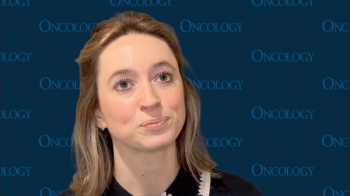
Cost-Effectiveness of Tisagenlecleucel in Pediatric Patients with ALL
This is the first cost-effectiveness analysis of the agent compared with the current standard of care using a constructed population-based control arm.
At a willingness-to-pay threshold of $150,000 per quality-adjusted life-year (QALY), tisagenlecleucel (Kymriah) had a 32% likelihood of being cost effective for pediatric patients with acute lymphoblastic leukemia (ALL), according to a study published in JAMA Oncology.
Researchers also found that tisagenlecleucel’s cost effectiveness would fall below $50,000/QALY with a long-term cure rate of over 0.40, or a price discount of 49% at its currently known effectiveness. This is the first cost-effectiveness analysis of tisagenlecleucel compared with the current standard of care for pediatric patients with ALL using a constructed population-based control arm.
“To be considered cost-effective, the large upfront price of tisagenlecleucel and other novel drugs must be offset by sustained survival effects or lower long-term complications for a public payer to consider it as good value for money,” the authors wrote. “However, with novelty comes uncertainty around expected long-term benefits.”
In this cohort, the treatment and control arms were modeled on 192 and 118 pediatric patients, respectively, starting at second relapse. Treatment with tisagenlecleucel was correlated with an additional 2.14 to 9.85 life years or 1.68 to 6.61 QALYs, compared with current care. Researchers found the average additional cost of tisagenlecleucel to be $470,013 Canadian dollars (US $357,031), and accounting for the total discounted cost over the patient lifetime resulted in an incremental cost of $71,000 (US $53,933) to $281,000 (US $213,453) per QALY gain.
Results were calculated using a Canadian population-based registry, pooling 3 single-arm tisagenlecleucel clinical trials and a provincial pediatric cancer registry to create treatment and control arms, respectively.
“Understanding the value for money of tisagenlecleucel is crucial to inform funding decisions made by public health insurance plans, where cost-utility analysis provides a basis for whether new drug products will be reimbursed,” the authors wrote.
The authors noted that their estimation of standard care efficacy represents a conservative calculation, because they only included patients with at least 2 relapses. Additionally, the different cost structures in the US and Canada also made it difficult to compare the exact relationship between the models used and costs.
According to the study, ALL is the most common childhood cancer, accounting for 1 in 5 diagnoses. Moreover, the current public list price for 1 course of tisagenlecleucel was set by the manufacturer at $625,000 Canadian dollars (US $475,000), attracting considerable concern from the medical community. This data provides a real-world benchmark for what product discount could make tisagenlecleucel cost-effective.
In the US, though the Centers for Medicaid & Medicare and private insurers generally place more emphasis on efficacy over cost, the matter of drug affordability is still relevant as more expensive drug products like CAR T-cells are brought to market. Other health authorities within public health care systems have also encouraged price decreases, and these results have bolstered the evidence base for these decisions.
“As this product opens to a broader patient population and clinicians continue to refine CAR T-cell protocols, comparative efficacy with standard care will likely evolve,” the authors wrote. “Nonetheless, to deliver effective and cost-effective care to patients today, price negotiation of these products has and likely will continue within publicly insured health care systems.”
Reference:
Furzer J, Gupta S, Nathan PC, et al. Cost-effectiveness of Tisagenlecleucel vs Standard Care in High-risk Relapsed Pediatric Acute Lymphoblastic Leukemia in Canada. JAMA Oncology. doi:10.1001/jamaoncol.2019.5909.
Newsletter
Stay up to date on recent advances in the multidisciplinary approach to cancer.

















































































